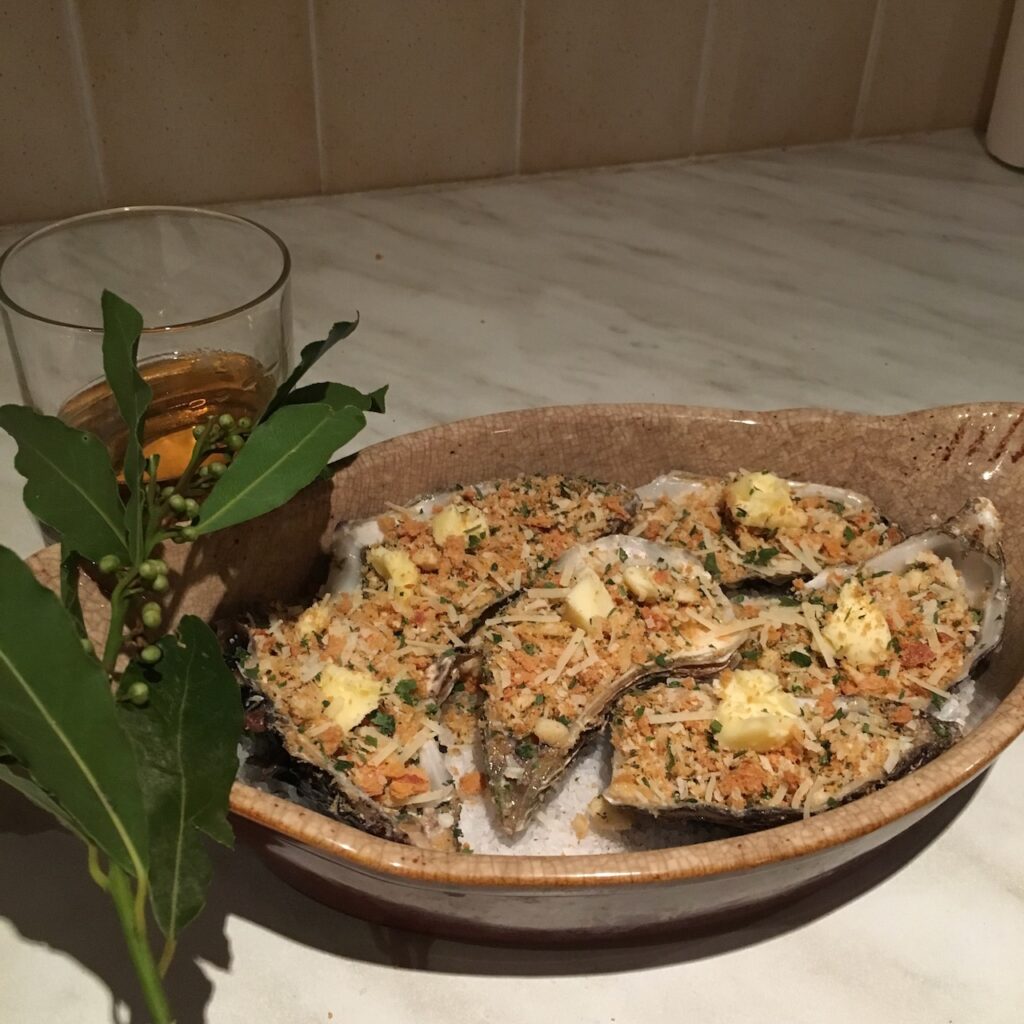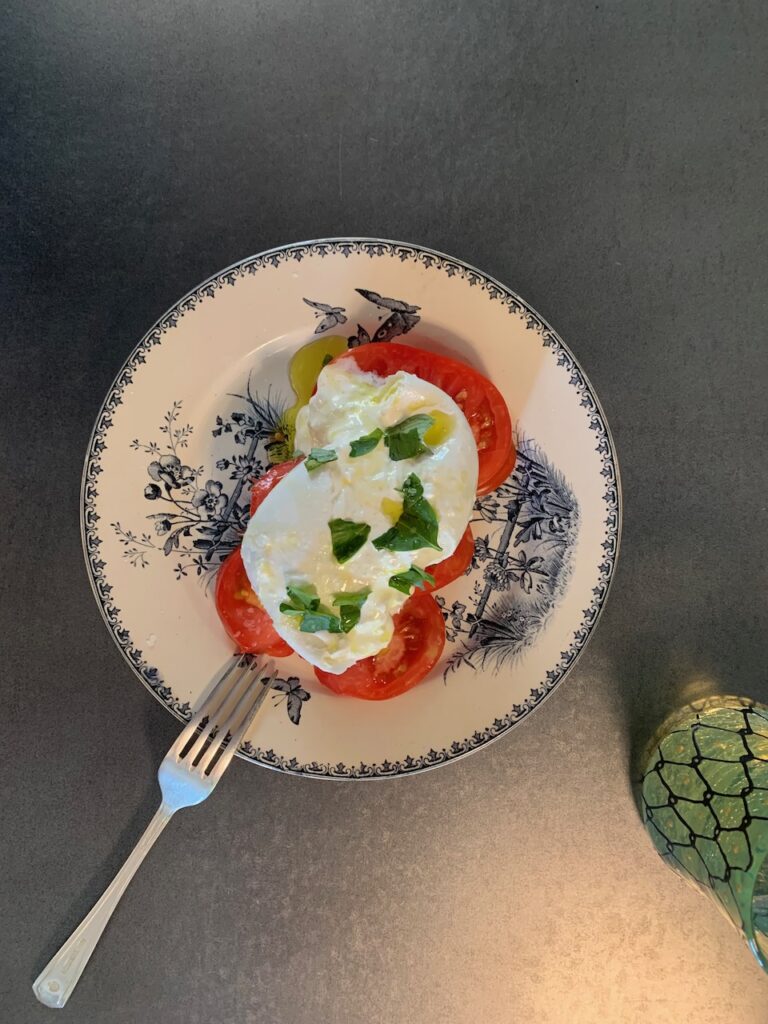It took a minute to get a kitchen up and running at LaBu that could do the sort of cooking that one—on occasion—feels is necessary to maintain a certain level of gastronomic cosmopolitanism (even in the midst of deepest rural France). Rather than wax ad-freaking-nauseum about la cuisine française (of which there is some little literature), I thought instead today I’d do a quick photo dump and commentary on some dishes prepared and eaten at LaBu, that don’t necessarily fit into a traditional French repertoire (although sometimes, it simply cannot be helped). Yes, I was just flipping through photos this morning, and found myself hungry.
There’s not single picture of the cassoulet that is a staple here (at LaBu, but certainly not in Normandy) during the colder months, or the various potato dishes that when prepared with duck fat (except for one), do truly transcend. You won’t find l’andouille de Vire, made just up the road, and one of those things that you should try once and then wonder why and swear never to do again, and so on. Instead, these are largely dishes that I’ve had to recreate oftentimes without the originally-called-for ingredients or that I have had to modify based on when things are in season, and whether anyone within 100 kilometers has any for sale.
This is the kitchen. It was built literally from the ground up (actually from a couple of feet under the ground).


An oldie but goodie. This one IS very of Normandy. Except, of course, the tequila. But it was the New Year, and one doesn’t judge, does one? Oysters are available by the burlap sack full here, and although I’ve now sworn off opening them myself, guests are always welcome to tackle what isn’t really a hard task, just one that gets in the way of the tequila shots.
Almost certainly taken the day after the previous picture (because notice, I said, by the sack full), this is a version of Oyster Rockefeller. There’s less cream, and a lot more butter (because, Normandy; also cream is Normandy, too, but we had lots of butter on hand). From this stage it went into oven, and then was consumed quickly thereafter.


Mussels steamed in a little wine with shallots, thyme, a bayleaf, and a smidge of garlic for about four minutes. Perfection. These very French bivalves we eat a lot of, particularly in these parts and north. The potatoes cooked in duck fat, ditto. The aioli fait maison, double-ditto. The champagne is there because, why not? What possible reason would you have for not having a bottle with a meal like this?
Biscotti and espresso. These biscotti, made by our friend Dave, are and have been for a number of years, the standard against which I measure such things. I’ve made them here, with much less success, but since he’s not far away, failure has always been an option.


That this onion soup, commonly called French Onion Soup, is made by madame, is simply and without hyperbole the best in the world, and is in fact, the ur-expression of caramelised allium hardly does justice to how well it photographs. Served with a bottle of Burgundian wine, it’s a meal (although regrettably for waistlines around here, it often is served as a first course). We’ve been known to do pork cooked in milk as a follow-on.
From the North Sea and slavic homelands, comes a combination that shows up regularly around here, particularly at this time of year. Oak-smoked salmon (Scotland), blini (I once almost started a business making blini, perhaps unwisely, although I’m not so sure), crème fraîche from local cows, red onions from Brittany, and lemon zest (Spain, maybe?). Accompanied in this case by a vodka martini with a sliver (or maybe a quarter) of habanero pepper. Also the best and highest use of this Armenien plate from Jerusalem. Also x 2, this view into the field no longer exists.


Although most of the rest of the world will be catching up eventually, the Northwest of France eats a lot of seaweed. Rarely though, prepared this way, as nori sheets on top of a bowl of stir fried udon with citrus-cured salmon pieces and soy-marinated mushrooms. There are very few opportunities to eat Japanese food in this part of the world. And despite the close connection the French have with the sea, by-and-large even sushi is pretty bad and/or very basic and/or blech. Other stuff is almost unheard of.
For obvious reasons, zen buddhist temple food gets a showing at LaBu with some regularity. Of course, it almost all has to be massaged and modified to meet local ingredients (tofu, e.g. is not readily available). Yu-dofu contains kombu, sake, mushrooms, tofu, ponzu, sesame, and finally a couple of good shakes of shichimi togarashi (which remarkably is made in our case, by a spice house in Saint Malo, on the northern coast of Brittany).


North Africa, for reasons of unbridled greed, imperial expansion, and just ’cause, has a close connection to France. But rarely does it show up in the food scene other than the ubiquitous couscous (which, despite having lived in its homeland, I’ve never understood). I’ve never seen shakshuka for sale. I do make it at LaBu though, and there is something about the eggs from a small farm down the road that elevate it to something stunning. The bread is fait maison as well.
Remarkably, for a country that is passionately protective (even a little xenophobically so) of its cheese production, very high quality buffalo milk burrata from Puglia is available. Combined with French heritage tomatoes and basil from LaBu’s gardens, it makes a most excellent lunch. And, of course, a pinch or so of la Guérandaise fleur de sel, transforms it into something more than simple sustenance.


And, finally, from the stove this morning, comes a small pot of shoyuzuke, an eggplant pickle. If you look hard enough you can find Japanese eggplant for about six seconds every year in the better markets. Combined with ginger, soy, garlic, peppers, and sugar, they make a perfect accompaniment to rice, or chicken, or even eggs. A regular hereabouts when ever the ingredients are available.
And, so, there we are: an eclectic collection of stuff made in the kitchen over the last couple of years. Since we now cook over wood rather than gas or electricity, the adventures continue, and promise to become ever more fulfilling as time goes on.

Be the first to reply